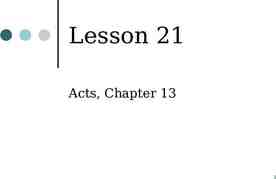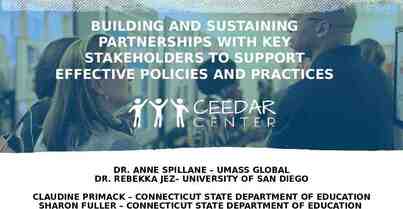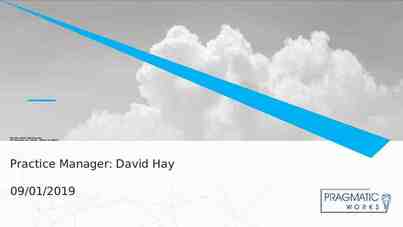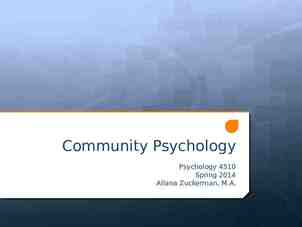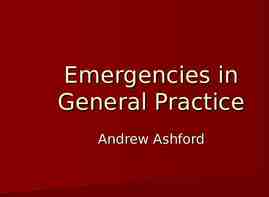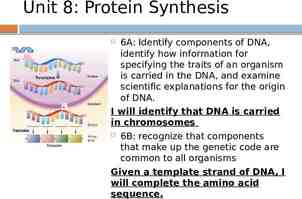Emergency Management + Floodplain Stewardship 1 ♥ A MATCH MADE AT EMI
51 Slides7.39 MB

Emergency Management Floodplain Stewardship 1 A MATCH MADE AT EMI 21st Emergency Management Higher Education Symposium: Diversity, Inclusion, & Unity of Effort FEMA Higher Education Program National Emergency Training Center Emmitsburg, MD Jerry Murphy, JD, AICP, CFM University of Florida Resilient Communities Initiative

Diversity, Inclusion, & Unity of Effort 2 build, engage, and amplify the work of the emergency management academic community

Risks / Opportunities We believe that in the future more [leaders] in government as well as in business and industry will come to the job with college education that includes a degree. . . . [T]o build disaster resistant and resilient communities a broad range of college students and professionals need courses that introduce them to hazards, risk, vulnerability, disasters, and what to do about them. 3

Risks / Opportunities: FEMA Higher Education Program The primary goal of the FEMA Higher Education Program: work with colleges and universities . . . professionals, and stakeholder organizations to help create an emergency management system of sustained, replicable capability and disaster loss reduction through formal education, experiential learning, practice, and experience centered on: 4

Risks / Opportunities: FEMA Higher Education Program 5 mitigation, preparedness, response, and recovery from the full range of natural, technological and intentional hazards which confront communities, States, and the Nation.

Opportunities Risks ASFPM Higher Education Committee Goal: Flood Risk Management in Higher Ed. degree programs work with partner agencies to increase curriculum explore opportunities with other disciplines, e.g., planning and emergency management, within their current curriculum structure 6

7 https://pbs.twimg.com/media/DDbisloWsAA2lVx.jpg

8 http://www.yorkmix.com/wp-content/uploads/2015/12/york-floods-dec-2015-nigel-holland-

9 http://www.yorkmix.com/wp-content/uploads/2015/12/york-floods-dec-2015-nigel-holland-

://cdn1.creativecirclemedia.com/kentuckytoday/original/1518486583 5971.jpg 10

Risks / Opportunities: FEMA Higher Education Program 11 mitigation, preparedness, response, and recovery from the full range of natural, technological and intentional hazards which confront communities, States, and the Nation.

Mitigation, Preparedness, Response, and Recovery. . . 12

Preparedness 13 Mitigation, Prevention, Protection, Response, and Recovery

National Preparedness Goal System National Frameworks: ASFPM Mission: Mitigation The mission of ASFPM is to promote education, policies and activities that mitigate current and future losses, costs and human suffering caused by flooding, and to protect the natural and beneficial functions of floodplains - all without causing Prevention Protection Response Recovery 14

ASFPM CFM Program National program for certifying floodplain managers. Recognizes continuing education and professional development. expanding due to increases in disaster losses, the emphasis on mitigation to alleviate the cycle of damage-rebuild-damage, and a recognized need for professionals to adequately address these issues. 15

ASFPM CFM Program Floodplain managers often specialize in one or more aspects of floodplain management. The Certified Floodplain Manager (CFM ) Program promotes a level of expertise. But an advanced curriculum in Floodplain Stewardship is developing. 16

17 https://assets.weforum.org/wp-content/uploads/2016/01/1601B01-most-frequentlyoccurring-natural-disasters-flooding-storm-un-infographic.png

18 http://assets.climatecentral.org/images/made/ 2 22 16 John CC NuisanceFlooding USFloodDays decades 1050 718 s c1 c c.jpg

Current Floodplain Higher Education Programs Western Kentucky University In 2012, Western Kentucky University created a Bachelors of Interdisciplinary Studies degree with a concentration in Floodplain Management. This is the first 4-year degree in floodplain management in the U.S. Required courses include surveying, GIS, hydrology, floodplain management, and field experience in floodplain management. Other courses include small group communication, political science, and journalism. 19

Current Floodplain Higher Education Programs University of Washington (state) The Floodplain Management program is a specialized track in the fully online Master of Infrastructure Planning and M anagement at UW. The floodplain program itself is a hybrid of online and in-person courses, with two summer sessions on the UW campus in Seattle and classes during the academic year delivered completely online. The full degree consists of 45 credits and requires seven quarters of study. 20

ASFPM Higher Education Framework CFM Working Knowledge Higher Education Body of Knowledge 21

CFM : Working Knowledge: 22 a. Flood studies and maps b. NFIP Rules and Regulations c. Regulatory standards d. Ordinance administration e. Flood insurance f. Hazard mitigation g. Natural and beneficial floodplain functions

Certified Floodplain Manager Program (CFM )

CFM Program History National Program Since 1999 National Program Managed by ASFPM Office CFM is a Registered Certification Mark of ASFPM

ASFPM’s Role Administration of CFM Program Set minimum standards Training – conferences, webinars and online Accredit/audit chapter programs 25

Why Become a CFM? Professional credibility Confidence in professional knowledge Professional/public recognition Job advancement potential Opportunity for continued education Personal satisfaction 26

CFMs Make a Difference: 27 reduce community liability promote safer development work to reduce flood insurance premiums educate to reduce property damage help improve water quality advise wise land-use trusted local advisors abide by a Code of Ethics //img.yumpu.com/20913580/1/358x269/charlotte-mecklenburg-floodplain-management-program.jpg?qualit

CFM Facts: Standardized national exam Pass rate of 50 to 75 percent* Over 10,000 CFMs and growing 28

29

CFM : Working Knowledge: 30 a. Flood studies and maps b. NFIP Rules and Regulations c. Regulatory standards d. Ordinance administration e. Flood insurance f. Hazard mitigation g. Natural and beneficial floodplain functions

CFM Exam Content 5-10% Overall Context of Floodplain Management 20-25% Floodplain Mapping 20-25% NFIP Regulatory Standards 15-20% Regulatory Administrative Procedures 10-15% Flood Insurance 10-15% Flood Hazard Mitigation 10-15% Natural and Beneficial Functions 31

Maintain your CFM Certifications are awarded by the ASFPM for a two-year period. CFMs must submit the following items to ASFPM every two years: Renewal Application (mailed to current CFMs) Continuing Education Credit (CEC) documentation Renewal Fee 32

33 https://youtu.be/MGntE lcNug

ASFPM Higher Education Framework CFM Working Knowledge Higher Education Body of Knowledge 34

ASFPM Floodplain Management Body of a comprehensive body of knowledge that is needed to Knowledge effectively manage floodplains. arranged by topic generally but the order does not imply a level of importance. All topics do not have equal weight in floodplain management. It is not intended to be a exhaustive list of every aspect of floodplain management, but a tool to: 35

ASFPM Floodplain Management Body of Knowledge—Overview 1. The physical processes operating on the stream, channel, shoreline, floodplain, and watershed: 2. The biological processes active in the floodplain 3. Human interactions with floodplains and drainage basins 4. Risk assessment models 36

ASFPM Floodplain Management Body of Knowledge—Overview 5. Policy, guidance, and plans 6. Management skills 7. Role in mitigation 8. Role in preparedness, response, and recovery operations 9. Agencies, organizations, and programs 37

ASFPM BODY OF KNOWLEDGE (BOK): 1. PHYSICAL PROCESSES: 38 a. Climate Change, Extreme Events, Global Warming, etc. b. the Hydrologic cycle c. Geology of basins, rivers, shorelines, and other dynamic interface d. Sediment production and mobilization e. Relationship of the river corridor to coastal processes.

BOK 2. BIOLOGICAL PROCESSES a. Ecological principles and biological processes b. Stream and river ecology c. Water quality effects on biological processes, recreation, water supply, aesthetics 39

BOK 3. HUMAN INTERACTIONS a. Riverside and coastal development b. North American development patterns c. Impact of land cover and human development on the physical and biological processes d. History of government responses e. Institutional framework for government programs f. Cultural biases that influence human 40

BOK 4. RISK ASSESSMENT Floodplain Mapping models Standard hydrologic and MODELS (HEC RAS) hydraulic models and Data collection tools and accuracy (gauges, remote sensing, LIDAR, NEXRAD, etc.) varying limits of accuracy Coastal models and methodology and limitations Hydrology and hydraulic principles Mapping scales, vertical and horizontal datum GIS and Spatial analytic tools Water quality measurement (biological or chemical oxygen demand) Mapping scale and data precision Interpretation of topographic data Ecological risk assessment Benefit/cost analysis Hazards US (HAZUS) 41

BOK 5. GUIDANCE, PLANS, & Hazards Insurance POLICY Statutory and regulatory authority and responsibility Legal obligations and constraints, Property Rights and responsibility, other specialized areas such as public trust doctrine Planning processes (Issues, goals, objectives, policies, programs, strategies, tactics ) Zoning processes (guiding development away from hazardous areas) Code compliance, administration and enforcement Subdivision regulations (setting the pattern and infrastructure of development 42

BOK 5. GUIDANCE, PLANS, & POLICY Stormwater and watershed management processes (detention, retention, best management practices) Natural areas rehabilitation, conservation and restoration (wetlands regulations, sensitive areas regulations, greenways, buffer areas, overlay districts ) Coastal zone processes (erosion control, dune and beach protection) Sedimentation, erosion and water velocity management Other specific watershed management activities that might not be included above. (water supply, water quality) Building codes 43

BOK 6. MANAGEMENT SKILLS 44 Partnering with related disciplines (planning, emergency management, architecture and landscape architecture) Working with teams and groups Communication and presentation skills (aural, graphic, written) Time management Managing people Arbitration and conflict resolution Project planning Ethics NIMS/ICS Outreach skills (developing outreach programs, training, etc.) Consensus and coalition building

BOK 7. ROLE IN MITIGATION Community Rating System (CRS) Unified national program Sustainable development, Smart Growth No Adverse Impact (NAI) Mitigation Operations Manual (MOM) Low impact development (LID) FireWise, TsunamiReady, StormReady 45 Project Impact Specific hazards mitigation tools (floodproofing, structural flood controls, retrofitting and acquisition) Other holistic watershed management programs (stormwater, protection & restoration, water supply, water quality, water & sewer master planning, land use planning) Use and understanding of Increased Cost of Compliance

46 BOK 8. ROLE IN PREPAREDNESS, RESPONSE, AND RECOVERY Emergency response (warning, evacuation, floodfight) Disaster recovery (Stafford Act Sections 404 and 406, National Response Plan ESFs, identifying mitigation opportunities in response and recovery operations) Debris Mutual Management Aid compacts and agreements

BOK 9. ORGANIZATIONS, AGENCIES, AND PROGRAMS 47 Federal agencies and programs (FEMA, EPA, NOAA, HUD USGS, USACE, USDA NRCS) State agencies and programs Local agencies and programs Professional / Trade organizations (ASFPM, ASCE, APA, ASDSO, AMS) Environmental organizations (National Wildlife Federation, beach protection groups) Public interest organizations (American Red Cross, Land Trust Alliance, IBHS, NSC, MCO, NEMA) Business organizations, (Chamber of Commerce ) Schools and school programs (Project WET ) Community/faith based organizations (World Vision, Mercy Corps )

THE FOUR LEGS OF THE STOOL EARTH SCIENCE CARTOGRAPHY ENGINEERING PHYSICS SCIENCE LAW POLICY DESIGN IMPLEME NT SOCIETY PLANNING DESIGN CONSTRUCTION RESILIENT DESIGN 48 PROCEDUR ES REGULATIO NS/RULES STANDARD S CODES CAPITAL POLICIES PRIORITIES PROGRAMS MANAGEME NT

Without THE FOUR LEGS OF THE STOOL: Disaster 49

50 Questions? jerry@ murphyplanning.com

Contact Us Association of State Floodplain Managers 8301 Excelsior Drive Madison, WI 53717 (608) 828-3000 [email protected] www.floods.org University of Florida Resilient Communities Initiative Jerry Murphy (239) 322-8510 [email protected] 51

